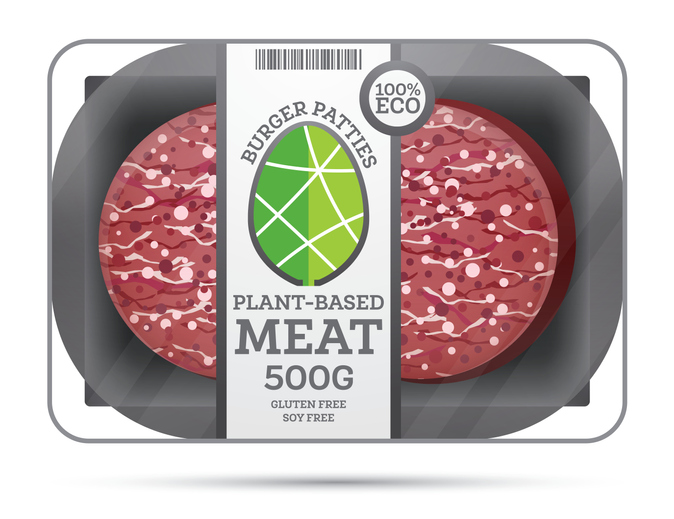Editor’s Note: Jenna Kirschner is senior research manager of 360 Market Reach, a New York-based marketing research firm.
Substituting meat with plant-based alternatives was on the rise in the pre-pandemic world. Meatless options have been growing in prevalence, not only on grocery shelves but also at fast food chains, fine dining restaurants and even meal kit delivery services. According to Statista, the market value of plant-based meat is expected to grow to over $30 billion by 2026.
Our health and wellness team has observed and tracked the increasing demand for plant-based meat alternatives over the last few years. During the pandemic, however, news of anticipated meat shortages and general health concerns laid the groundwork for plant-based meat alternative options to be launched into consumer's shopping carts at a significantly increased rate.
To test this hypothesis, we conducted an online survey among 275 adults, ages 18+, who have a focus on health and wellness in their lives. The objective of this research was twofold:
- To understand the rising popularity of plant-based meats overall.
- To capture how the COVID-19 pandemic has accelerated meatless consumption habits.
Sustainable, nutritious and plant-based options
 Our research found that a health-driven lifestyle is a priority for health and wellness consumers, and with meat alternatives already on the rise, 6 out of 10 indicated that they had purchased a plant-based meat alternative within the last month. Plant-based foods serve a multitude of purposes in the consumer’s diet, primarily their overall health benefits (47%), but also for the opportunity to reduce daily meat intake (38%), the added nutritional value (32%), opportunity to diversify diets (32%) and lessen saturated fat intake (30%).
Our research found that a health-driven lifestyle is a priority for health and wellness consumers, and with meat alternatives already on the rise, 6 out of 10 indicated that they had purchased a plant-based meat alternative within the last month. Plant-based foods serve a multitude of purposes in the consumer’s diet, primarily their overall health benefits (47%), but also for the opportunity to reduce daily meat intake (38%), the added nutritional value (32%), opportunity to diversify diets (32%) and lessen saturated fat intake (30%).
Consumers’ interest to try new foods and experiences led us to dig deeper in order to understand which ingredients they prefer. Most preferred a meatless option with ingredients like legumes, mushrooms and nuts. Secondary ingredients, following closely behind, include quinoa, lentils, cauliflower and soy protein. The willingness to incorporate a wide array of new ingredients and food types emphasizes a growing opportunity in this space.
Empty shelves
Supply shortages coupled with a sharp decrease in consumers venturing into stores has disrupted the grocery shopper journey. During this pandemic, consumers have faced emptied shelves as well as online delivery delays, forcing them to adjust their shopping habits.
Since the onset of the COVID-19 pandemic, 9 out of 10 health-focused consumers experienced a meat product being out of stock. This led to the generation of resourceful and flexible consumers maneuvering the shopping aisles in search of an alternative product that meets their need. Three out of 10 consumers addressed this by purchasing a plant-based meat product, associating these purchases as not only convenient, but also a healthy, tasty and a good-for-you option.
The increase in plant-based meats was further accelerated by the pandemic and served as a solution to consumer demand for a healthy and nutritious “meat.” In fact, 1 out of 5 people who consume plant-based meat say they purchased more meatless products than typical throughout the pandemic. Therefore, the last few months has made it very clear that the plant-based movement is not only here to stay but could possibly revolutionize the traditional American meat and potatoes dinner.
What’s on the horizon?
Our research found that the health and wellness-conscious consumer has a growing appetite for plant-based meats. To fulfill that appetite, brands will need to:
- Increase product variety. Consumers are tapped into new products that will bring diversity into their diets. Developing new types of meatless alternatives, as well as incorporating a range of ingredients and flavors, will provide consumers with more options to please the palette.
- Promote transparency. Clear and clean label ingredients create trust among current and potential consumers. The typical consumer is growing more knowledgeable about ingredient inclusions, emphasizing the importance of a transparent ingredient list and nutritional fact label.
- Foster sustainability. As the U.S. population grows, the demand for meat increases leading to natural resources depleting, pollution rising and growing animal welfare concerns. Plant-based products appeal to the eco-conscious consumer as production is less detrimental to the environment.
There is still much to be accomplished in the world of plant-base meat options. These three factors are imperative to successful product introductions.
Staying ahead of the curve
 As a market researcher, you are probably asking, “How do I make my brand an invaluable partner to customers and potential customers in the plant-based space?” This space continues to grow and consumers evolve. It is imperative to stay immersed in the lives of plant-based consumer and utilize key research methodologies to stay ahead of the curve.
As a market researcher, you are probably asking, “How do I make my brand an invaluable partner to customers and potential customers in the plant-based space?” This space continues to grow and consumers evolve. It is imperative to stay immersed in the lives of plant-based consumer and utilize key research methodologies to stay ahead of the curve.
An evolving category coupled with an invigorated consumer base can necessitate modifying traditional brand strategies, be it in product innovation and/or marketing. Here are a few research methods to explore when making business decisions for your brand.
Trend tracking
Trend tracking helps identify market opportunities and threats. A combination of quantitative and qualitive methodologies builds a well-rounded perspective and a good road map to focus efforts.
Qualitative deep dives through discussion forums, focus groups or ethnographic immersions (virtual ethnographies through video) coupled with quantitative online surveys helps shed light on the trends that are occurring among a more forward-thinking group of consumers. An ongoing tracker among a core group of health and wellness-focused consumers will provide a quantifiable read on evolving trends toward ingredients, flavors, product varieties and messaging.
Product innovation testing
Early innovation work is key to sifting through ideas and understanding which resonate strongly with consumers in your category. This area is a driver of product expansion, brand growth and differentiation among competitive brands, therefore propelling the need for ideation exploration, concept testing and IHUTs.
Rapid innovation testing would assess the market potential for new product innovations in an effort to narrow down the most resonating ideas to bring to market. Technology can allow you to gain key metrics in a concise and engaging way to funnel through a large volume of ideas for core areas of focus. In 2020, this is easier and more reliable from a research perspective than ever before.
Refining message strategies
Prior to launching marketing campaigns, it is essential to test messaging strategies that will capture the target market. Developing the right message for a target audience is critical as it aligns product benefits, drives purchases and differentiates from competitors.
When targeting the health and wellness-conscious consumer it is critical to test messaging related not only to product benefits, but also messaging related to the brand’s core values and sustainability efforts. The communication must appeal to the consumer’s overall lifestyle goals as well as product expectations. Exploratory qualitative research such as online IDIs and focus groups will engage with category consumers and help the brand understand the nuances that drive purchase. Based on qualitative findings, quantitative, iterative message-building can optimize both packing and branding communications.
